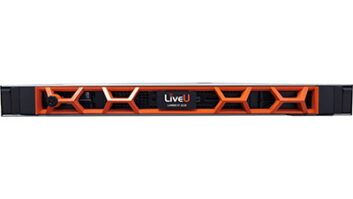Television manufacturers are betting Ultra HD will be the next big thing in home entertainment, bringing out a range of sleek new UHD sets despite there not being much in the way of 4K TV available at present. Netflix and Amazon are believers, promising to deliver 4K video via internet video streaming services well in advance of traditional broadcasters. In the vernacular of savvy media types, 4K is ready to go OTT (or Over The Top).
There are, of course, plenty of sceptics who believe this 4K push is premature. They point to a dearth of content, nascent standards and inadequate broadcasting infrastructure. And while 4K offers four times the resolution of today’s ‘full’ HD, there’s considerable debate as to whether pixel count alone actually creates a better viewing experience.
The Ultra HD picture is clouded by a lack of clarity on a number of fronts and a roadmap for 4K TV delivery is desperately needed. Sky Deutschland head of Innovations and Standards, Stephan Heimbecher has made his position clear: “UHDTV must represent a step change in the viewing experience for it to be a success.”
This slow and steady approach to 4K delivery has not stopped some of Europe’s more ambitious broadcasters from forging ahead. The satellite operator SES revealed that it has carried out tests for major European clients including Sky Deutschland, Sky UK, and Canal Plus in France and Spain, predicting there will be multiple 4K/Ultra-HD channels as soon as autumn 2016.
The creative director of BBC’s Natural History Unit also went on the record to say he couldn’t imagine returning to HD after shooting the new nature series, Survival, in 4K. Sky Sports conducted the UK’s first live 4K broadcast back in September during a Premier League football game and found the format had ‘real potential.’
The momentum building for 4K TV underscores just how much the television market has evolved in the decade since HD was rolled out. Back then, even with satellite channels, TV was defined by scarcity. Now, the TV is one screen of many. Consumers have come to expect choice and control in the media they consume.
Netflix CEO Reed Hastings, believes we have reached an inflection point where the traditional model of linear TV is giving way to a new world of applications across a raft of devices. Of course, this could be viewed as a threat to traditional broadcasters – but it also provides fresh impetus for those looking to push the boundaries. The producers who are embracing 4K now are the ones likely to be wowing audiences when European broadcasters finally flick the 4K switch.
A recent report by US market research firm Park Associates predicted 4K TVs will reach mass-market pricing in the next two to three years and top 80 percent of US households in 10 to 12 years. “4K TV adoption is following the same pattern as HDTV but prices are dropping more quickly,” explained the firm’s president Stuart Sikes. If its estimates are accurate, 4K TV will grow at an even faster rate than HDTV.
The science fiction author William Gibson once memorably remarked “the future’s already here, it’s just not very evenly distributed.” That’s very much the picture with 4K at present. Our role at Canon is to help facilitate creative expression at all ends of the spectrum. That’s why we already have two 4K cameras, and recently launched a 4K cinema-servo lens that reflects the evolving needs of broadcasters.
Change is never easy, especially when the stakes are high and the outcome uncertain. But when it comes to technology, the only way is forward. The only question is how quickly we adapt.







